Sceneries from rural India
Uttar Pradesh is one of the most energy poor states in India, where around 10 million families do not have a access to electricity. Here are some images of the things I witnessed during my research trips to the rural areas in 2016.
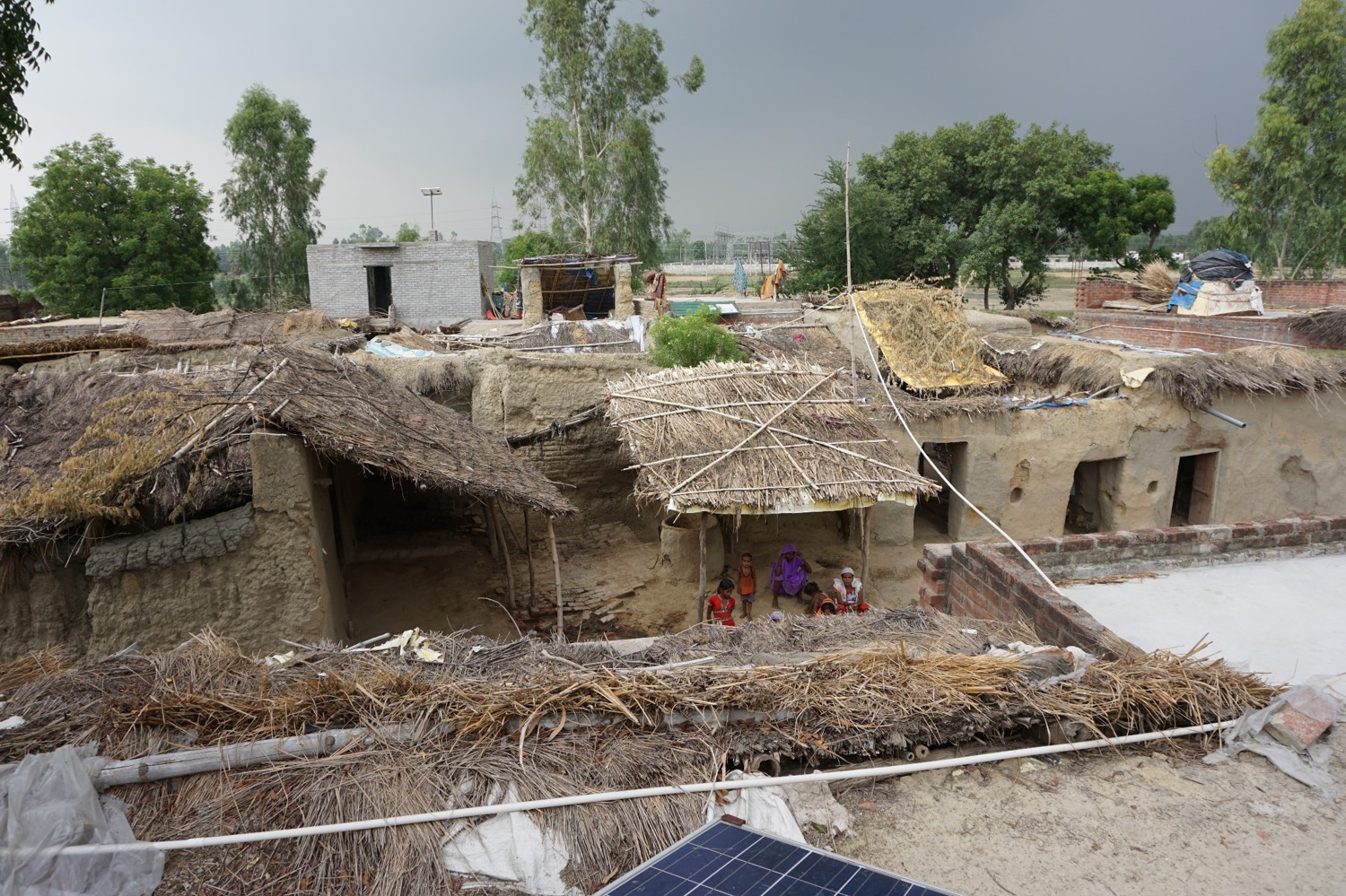 Micro-grid system seen at a rooftop in rural Uttar Pradesh (India). It provides 24/7 access to electricity. In the background, a substation of a high voltage electricity transmission system, not extended to this village, as yet (December 2016).
Micro-grid system seen at a rooftop in rural Uttar Pradesh (India). It provides 24/7 access to electricity. In the background, a substation of a high voltage electricity transmission system, not extended to this village, as yet (December 2016).
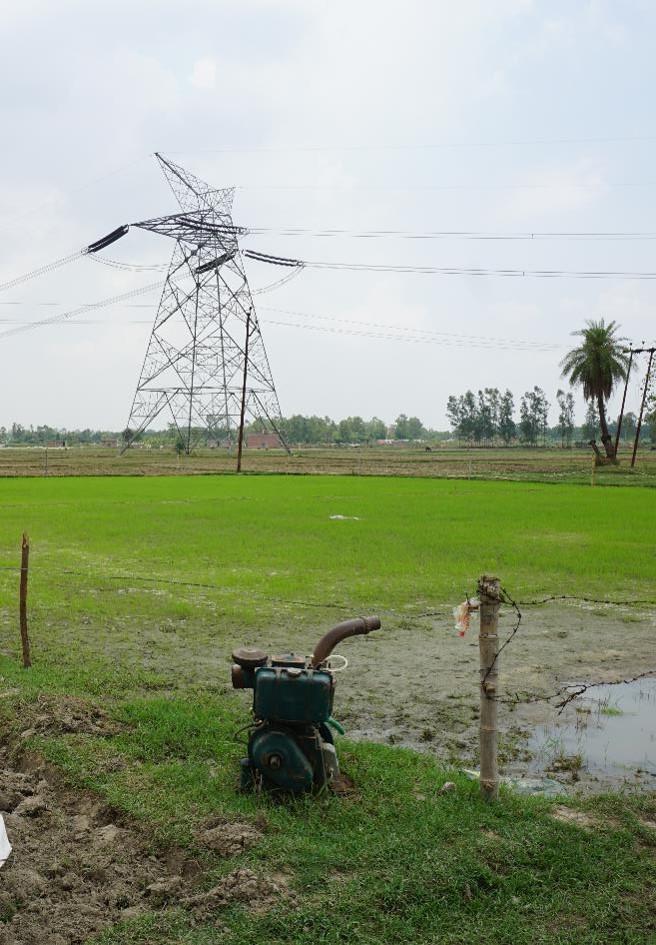 The power running through the high-voltage transmission lines in the background is non-accessible for the villagers. Water irrigation pump in the foreground is diesel-powered.
The power running through the high-voltage transmission lines in the background is non-accessible for the villagers. Water irrigation pump in the foreground is diesel-powered.
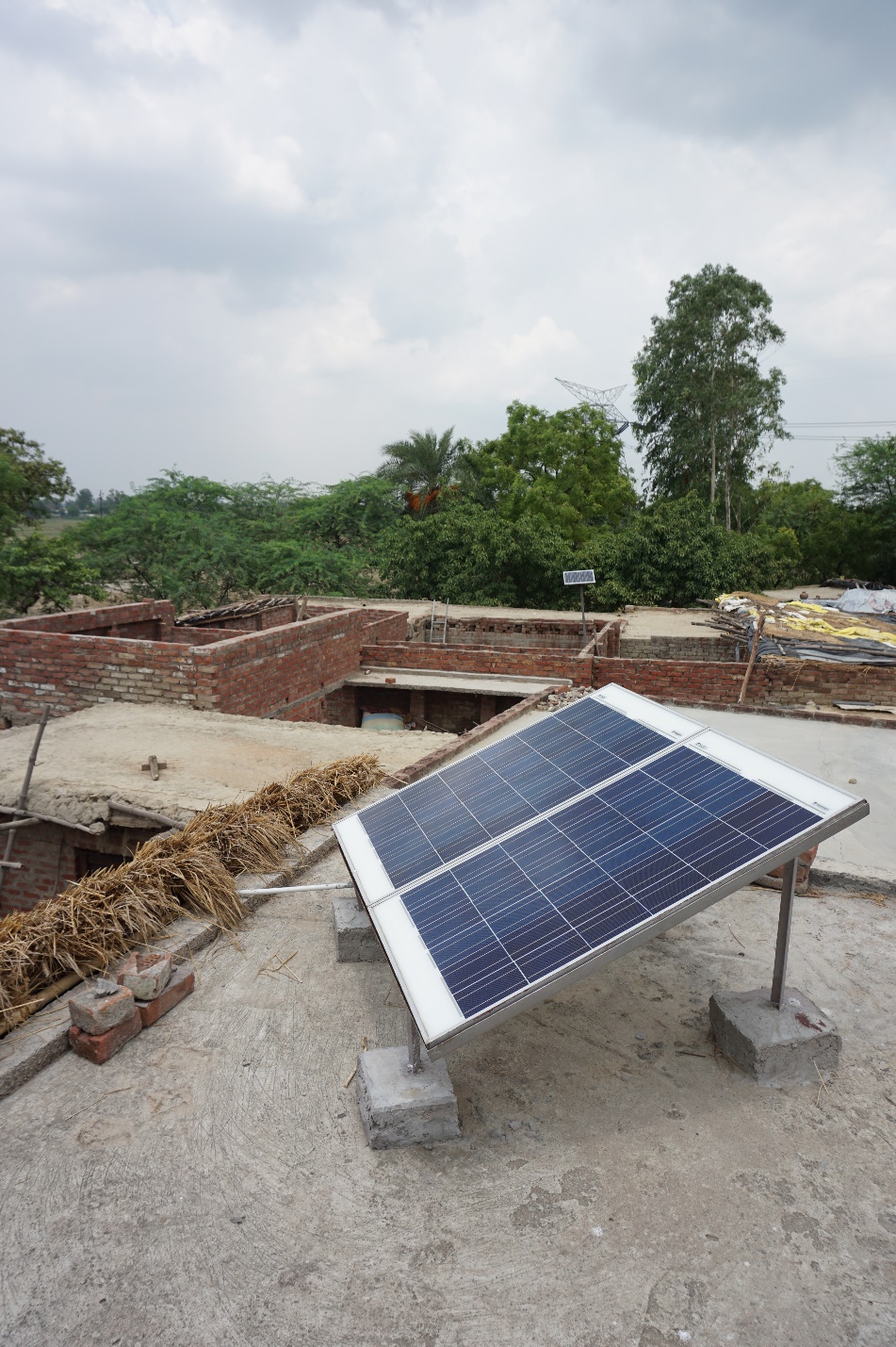 Solar suits well for rural off-grid areas especially due to abundant amounts of sunshine, compared to large Indian cities where pollution reduces solar output.
Solar suits well for rural off-grid areas especially due to abundant amounts of sunshine, compared to large Indian cities where pollution reduces solar output.
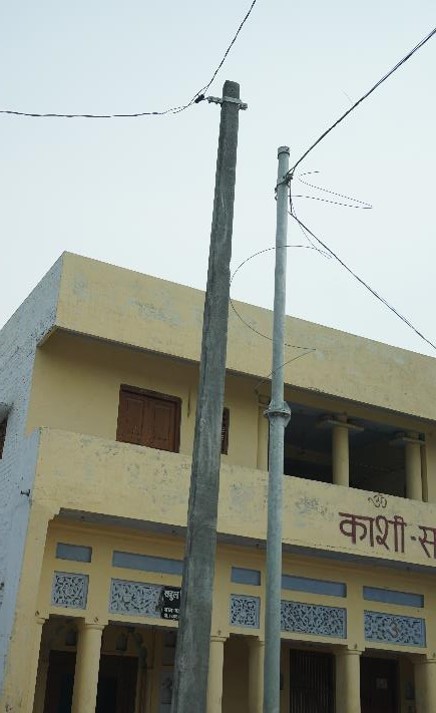 The state-owned distribution pole (made of concrete, on the left) is useless, as the wires do not feed electricity. The pole on the right is for the village solar micro-grid installed by the local energy entrepreneur.
The state-owned distribution pole (made of concrete, on the left) is useless, as the wires do not feed electricity. The pole on the right is for the village solar micro-grid installed by the local energy entrepreneur.
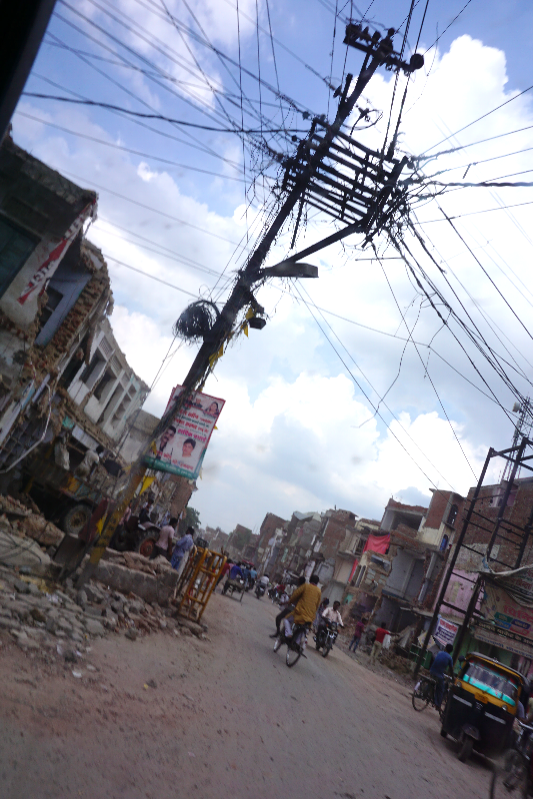 The national disribution company (DISCOM) pole in the nearby city Unnao. The distribution system is highly unreliable and offers electricity for 8-12 hours per day. Problems are due to technical and political reasons. The outages are unscheduled. A number of connecting cables in this pole are illegal and belong to nearby entrepreneurs and households.
The national disribution company (DISCOM) pole in the nearby city Unnao. The distribution system is highly unreliable and offers electricity for 8-12 hours per day. Problems are due to technical and political reasons. The outages are unscheduled. A number of connecting cables in this pole are illegal and belong to nearby entrepreneurs and households.
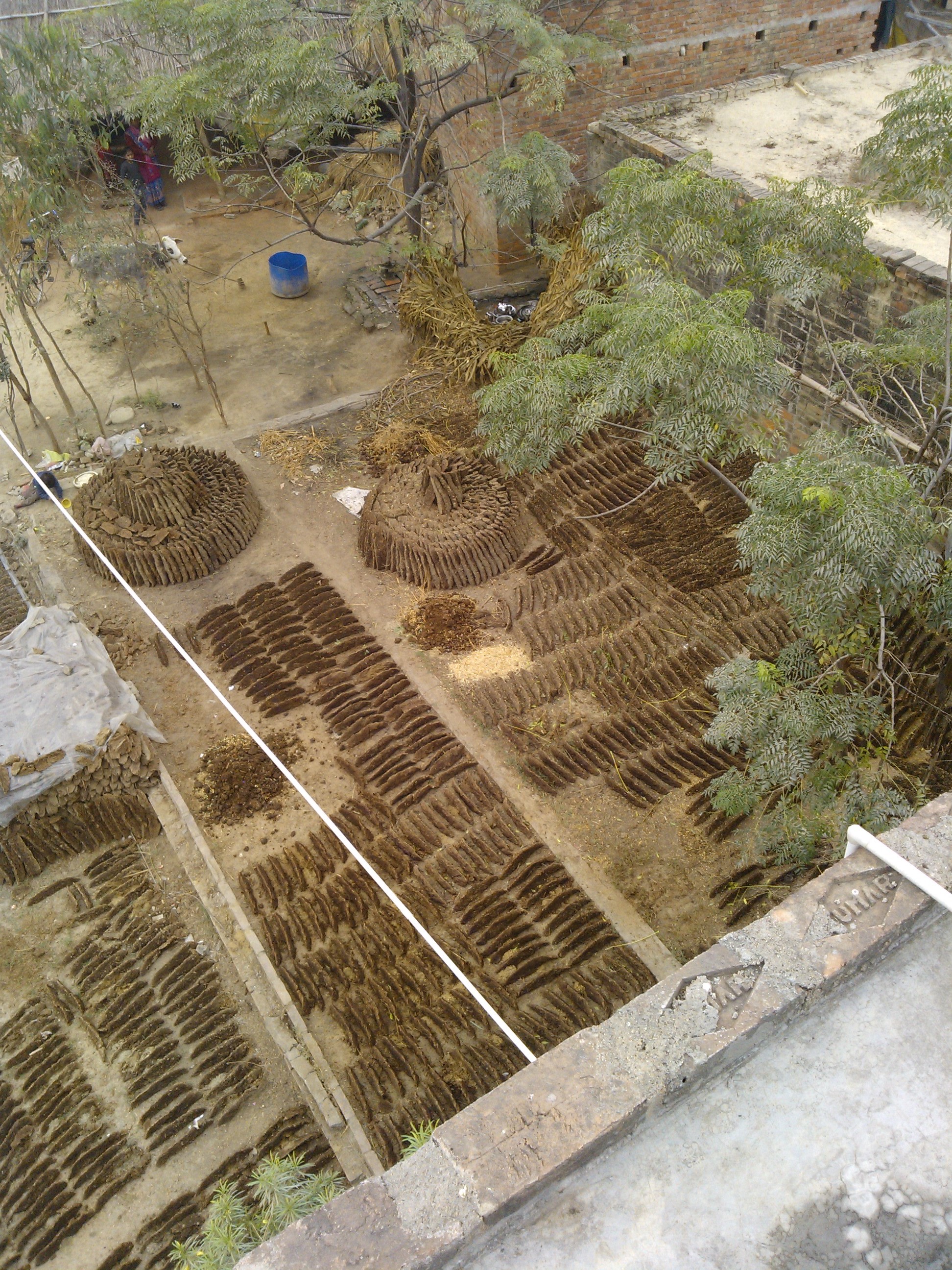 Dried buffalo dung cakes are used as fuel in kitchen stoves, for making food.
Dried buffalo dung cakes are used as fuel in kitchen stoves, for making food.
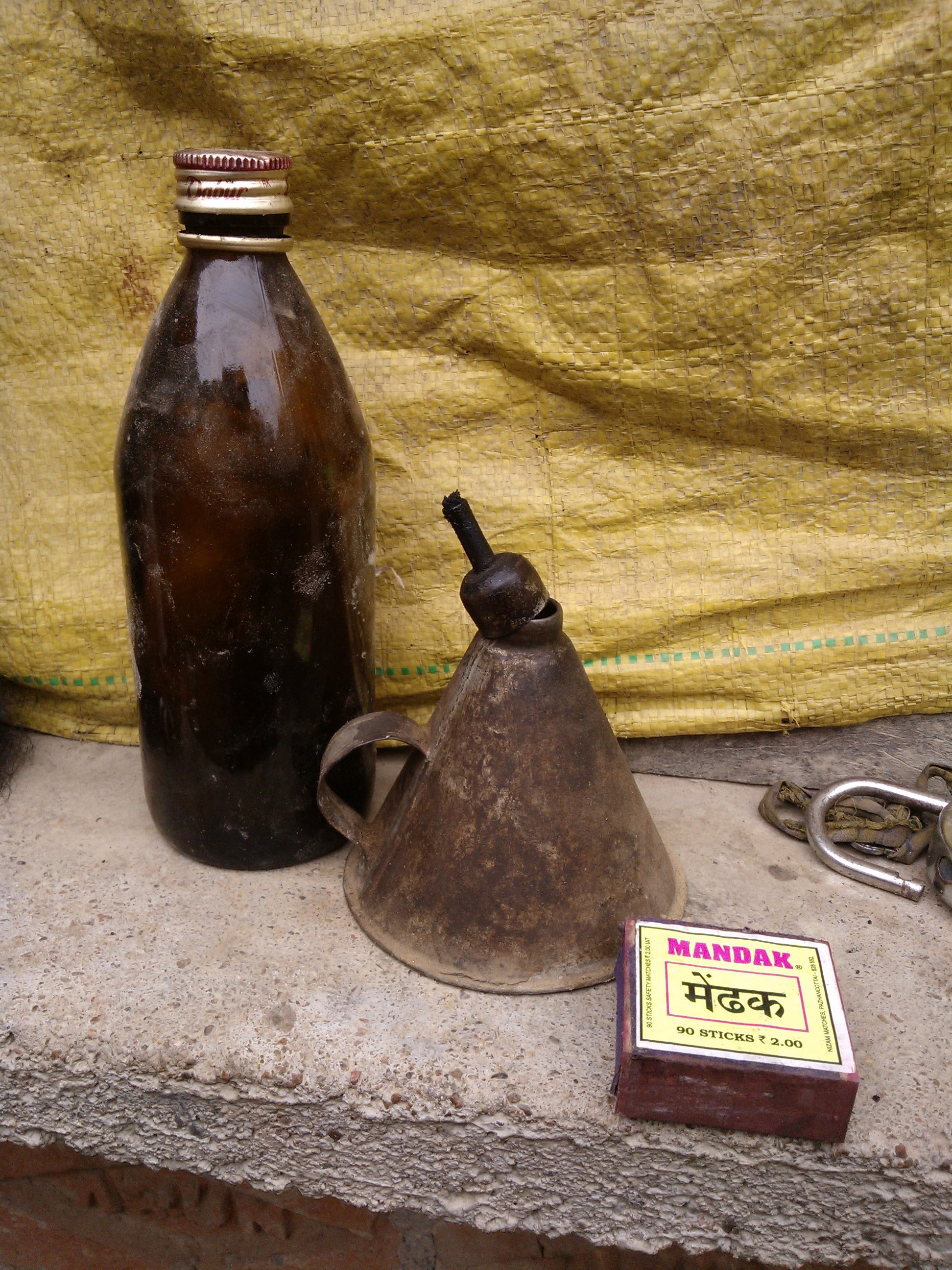 Kerosene lamps are still widely used for lighting in Indian countryside homes. Kerosene is subsidied by the state and well available around the country. They produce dangerous exhaust fumes.
Kerosene lamps are still widely used for lighting in Indian countryside homes. Kerosene is subsidied by the state and well available around the country. They produce dangerous exhaust fumes.
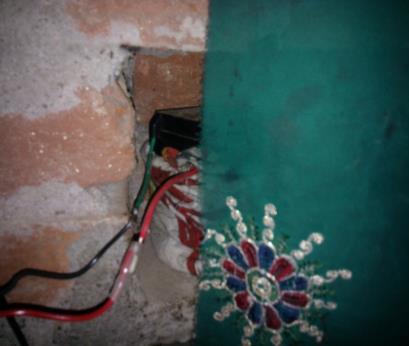 Locals are innovative in their energy use. This is an old motocycle battery which was configured by locals to power up an extra light bulb in the corridor of their house.
Locals are innovative in their energy use. This is an old motocycle battery which was configured by locals to power up an extra light bulb in the corridor of their house.